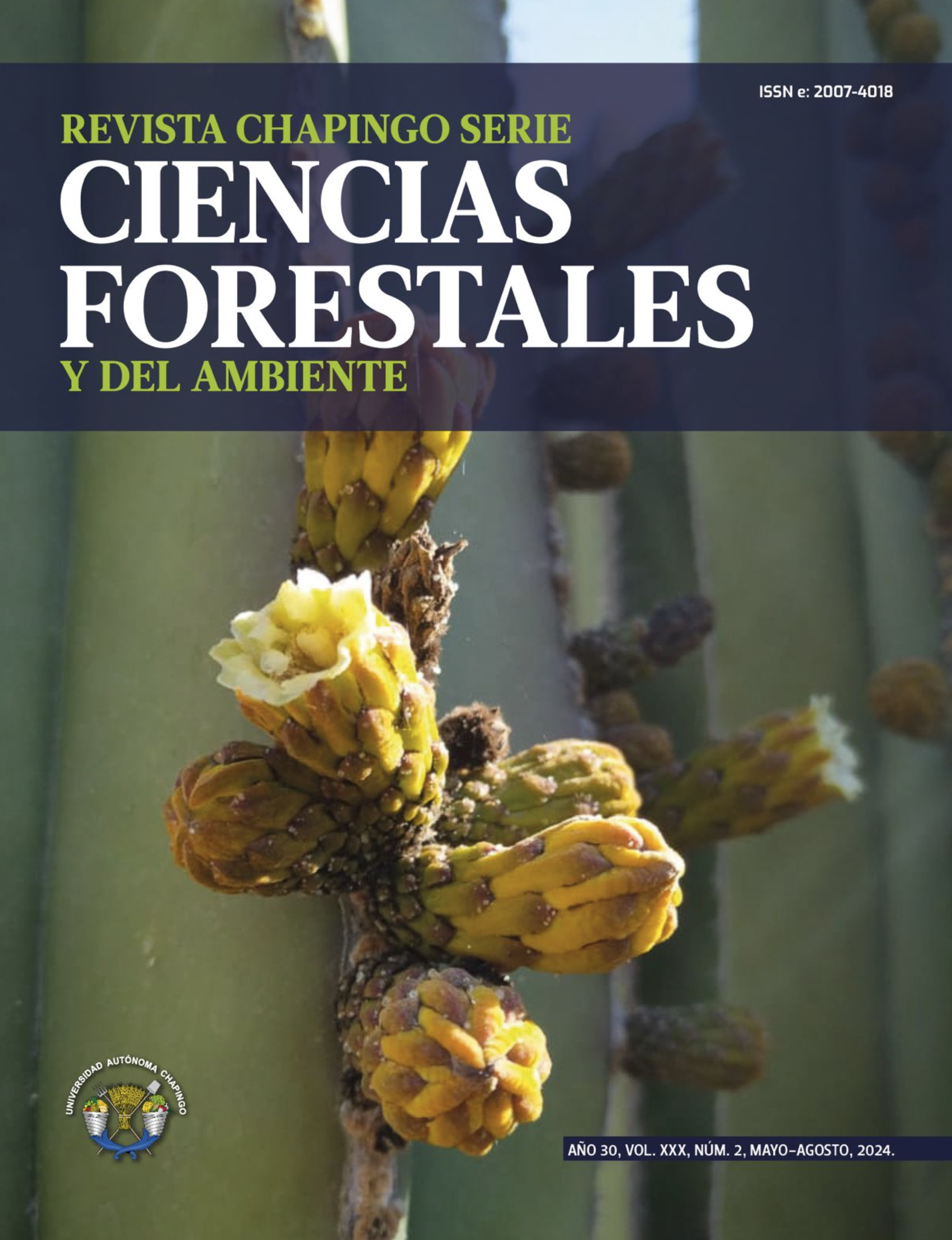Abstract
Abstract
Introduction: Floods are a common phenomenon in flat ecosystems with deficiencies in river drainage, impacting the local and regional economy. They can be identified and analyzed by remote sensing.
Objective: The aim of this study was to evaluate the performance of two normalized water indices during periods of maximum and minimum annual precipitation for the identification of flooding in the Salado River Basin, Argentina.
Materials and methods: The years with maximum and minimum annual precipitation in the period 2001-2020 were derived from satellite estimates of monthly precipitation provided by NASA through Google Earth Engine. Floods were identified using Landsat images, applying two normalized water indices (NDWI -Normalized Difference Water Index- and modified NDWI) to evaluate their performance in generating binary images that better represent the reality of the study area.
Results and discussion: Both indices showed good capability in identifying permanent or semi-permanent watercourses and water bodies; however, only the NDWI demonstrated higher effectiveness in identifying flooded areas with shallow depths (5 to 15 cm). The use of the Landsat mid-infrared band (1 566 - 1 651 μm) is less sensitive to water sediment load and can reflect subtle differences in it, providing a greater ability to delineate the water-soil boundary.
Conclusion: The use of NDWI showed a suitable behavior for the identification of flooded areas in very low slope ecosystems
References
Ameghino, F. (1884). Las secas y las inundaciones en la provincia de Buenos Aires (5.ª ed.). Ministerio de Asuntos Agrarios de la provincia de Buenos Aires. https://es.scribd.com/doc/274933020/Las-Secas-y-Las-Inundaciones-en-La-Prov-de-Bs-as-Florentino-Ameghino
Atzberger, C., (2013). Advances in remote sensing of agriculture: context description, existing operational monitoring systems and major information needs. Remote Sensing, 5(2), 949–981. https://doi.org/10.3390/rs5020949
Bustamante, J., Díaz-Delgado, R., & Aragonés, D. (2005). Determinación de las características de masas de agua someras en las marismas de Doñana mediante teledetección. Revista de Teledetección, 24, 107–111. http://hdl.handle.net/10261/60245
Chauhan, S., Darvishzadeh, R., Boschetti, M., Pepe, M., & Nelson, A., (2019). Remote sensing-based crop lodging assessment: current status and perspectives. ISPRS Journal of Photogrammetry and Remote Sensing, 151, 124–140. https://doi.org/10.1016/j.isprsjprs.2019.03.005
Florio, E. L., Mercau, J. L., Jobbágy E. G., & Nosetto, M. D. (2014). Interactive effects of water-table depth, rainfall variation, and sowing date on maize production in the Western Pampas. Agricultural Water Management, 146, 75–83. https://doi.org/10.1016/j.agwat.2014.07.022
Gao, B. (1996). NDWI-a normalized difference water index for remote sensing of vegetation liquid water from space. Remote Sensing of Environment, 58, 256–266. https://doi.org/10.7717/peerj.6450
Gorelick, N., Hancher, M., Dixon, M., Ilyushchenko, S., Thau, D., & Moore, R. (2017). Google Earth Engine: Planetary-scale geospatial analysis for everyone. Remote Sensing of Environment, 202,18–27. https://doi.org/10.1016/j.rse.2017.06.031
Huang, C., Chen, Y., Zhang, S., & Wu, J. (2018). Detecting, extracting, and monitoring surface water from space using optical sensors: A review. Reviews of Geophysics, 56(2), 333–360. https://doi.org/10.1029/2018RG000598
Instituto Nacional de Tecnología Agropecuaria (INTA). (2022). Estación experimental agropecuaria cuenca del Salado. https://inta.gob.ar/cuencadelsalado
Kuppel, S., Houspanossian, J., Nosetto, M. D., & Jobbágy, E. G. (2015). What does it take to flood the Pampas? Lessons from a decade of strong hydrological fluctuations. Water Resources Research, 51(4), 2937–2950. https://doi.org/10.1002/2015WR016966
Lara, B., Gandini, M., Matteucci, S., & Scaramuzzino, R. (2019). Cambios en el funcionamiento de la región pampeana en los últimos 20 años: indicios del impacto del cambio global. Revista de la Asociación Argentina de Ecología de Paisajes, 9(1), 81–84. https://www.asadep.com.ar/l/cambios-en-el-funcionamiento-de-los-ecosistemas-de-la-region-pampeana-en-los-ultimos-20-anos-indicios-del-impacto-del-cambio-global/
Liu, Z., Yao, Z., & Wang, R. (2016). Assessing methods of identifying open water bodies using Landsat 8 OLI imagery. Environmental Earth Sciences, 75(10), 1–13. https://doi.org/10.1007/s12665-016-5686-2
Matteucci, S. (2012). Ecorregión Pampa. In J. Morello, S. Matteucci, A. Rodríguez, & M. Silva (Eds.), Ecorregiones y complejos ecosistémicos argentinos (pp. 391–446). Orientación Gráfica Editora. https://www.researchgate.net/profile/Silvia-Matteucci-2/publication/268447092_Ecorregiones_y_complejos_ ecosistemicos_Argentinos/links/598333be0f7e9b2ac353f62e/ Ecorregiones-y-complejos-ecosistemicos-Argentinos.pdf
Nossetto, M. D., Paez, R., Ballesteros, S., & Jobbágy, E. (2015). Higher water-table levels and flooding risk under grain vs. livestock production systems in the subhumid plains of the Pampas. Agriculture, Ecosystems and Environment, 206, 60–70. https://doi.org/10.1016/j.agee.2015.03.009
Passucci, V., Carmona, F., & Rivas, R. (2017). Identificación de zonas anegadas y no anegadas mediante técnicas de teledetección. Revista Estudios Ambientales, 5(2), 51–78. http://hdl.handle. net/11336/59498
Pekel, J., Cottam, A., Gorelick, N., & Belward, A. (2016). High-resolution mapping of global surface water and its long-term changes. Nature, 540, 418–422. https://doi.org/10.1038/nature20584
Pinilla, A., Guevara, C., Lara, B., & Kruse, E. (2019). Impactos de los cambios de uso del suelo sobre la recarga subterránea en una zona de llanura. Caso de estudio, cuenca superior del arroyo Del Azul. Revista de la Asociación Argentina de Ecología de Paisajes, 9(1), 40–44. https://ri.conicet.gov.ar/bitstream/handle/11336/132708/CONICET_Digital_Nro.8c4bf8f9-99d9- 4bce-9cf2-ad0bcff5b526_A.pdf?sequence=2&isAllowed=y
QGIS Development Team. (2022). QGIS Geographic Information System. Open Source Geospatial Foundation Project. http://qgis.osgeo.org/
Vázquez, P., Cabria, F., Rojas, M., & Calandroni, M. (2009). Riesgo de anegamiento: estimaciones para la Cuenca Baja del Río Salado. Ciencia del Suelo, 27(2), 237–246. http://www.scielo.org.ar/scielo.php?pid=S1850-20672009000200010&script=sci_ arttext&tlng=en
Vercelli, N., Varni, M., Lara, B., Entraigas, I., & Ares, G. (2019). Linking soil water balance with flood spatial arrangement in an extremely flat landscape. Hydrological Processes, 34(1), 21– 32. https://doi.org/10.1002/hyp.13567
Weiss, M., Jacob, F., & Duveiller, G., (2020). Remote sensing for agricultural applications: ameta-review. Remote Sensing of Environment, 236, 111–402. https://doi.org/10.1016/j.rse.2019.111402
Xie, H., Luo, X., Xu, X., Pan, H., & Tong, X. (2016). Evaluation of Landsat 8 OLI imagery for unsupervised inland water extraction. International Journal of Remote Sensing, 37(8), 1826–1844. https://doi.org/10.1080/01431161.2016.1168948
Xu, H. (2006). Modification of normalized difference water index (NDWI) to enhance open water features in remotely sensed imagery. International Journal of Remote Sensing, 27(14), 3023– 3033. https://doi.org/10.1002/hyp.13567

This work is licensed under a Creative Commons Attribution-NonCommercial 4.0 International License.
Copyright (c) 2024 Revista Chapingo Serie Ciencias Forestales y del Ambiente



